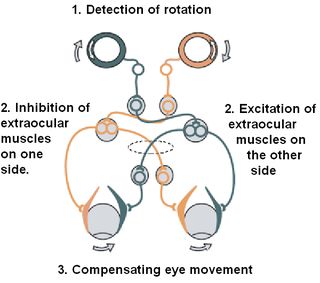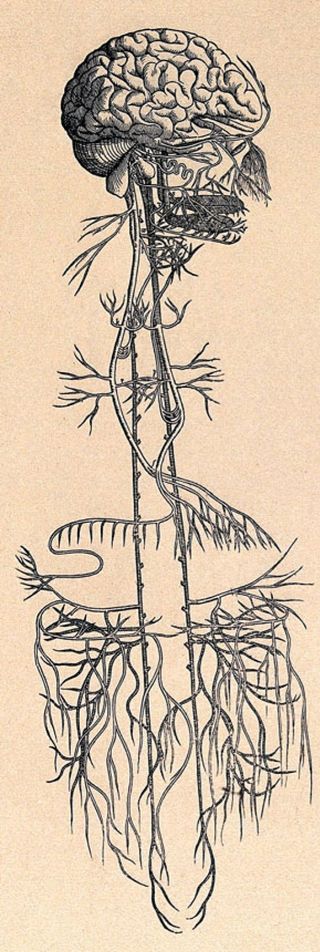Neuroscience
Zen and the Neurobiology of Letting Go of Your Ego
Vestibulo-ocular reflex and "vagusstoff" can help you lose yourself in the zone.
Posted February 23, 2019
A few days ago, I was hired by a California-based startup as a ghostwriter to create some fresh website content exploring the intersection between peak performance, neuroscience, and getting in the so-called “zone.” Prior to a getting-to-know-you phone interview for the job, I put together a short bullet-point list of five points of difference that make my neuroscience-based approach to athletic competition and creating flow unique.
I also wrote a rather lengthy first-person narrative post, “Superfluidity and the Synergy of Your Four Brain Hemispheres,” which shared some detailed autobiographical information about how and why I view being in the zone as having two tiers and a "phase transition" that occurs episodically.
First, there is the regular day-to-day “flow” state which is easy to dial up by matching skill/challenge levels. Second, there are episodic bursts of ego-dissolving and ecstatic “superflow” which can happen anytime you really lose yourself while performing any verb-based activity that can be turned into a gerund by adding -ing (e.g., running, biking, swimming, singing, skiing, rock climbing, playing tennis, writing, drawing, making art, etc.)
Below is a two-minute video showing the phase transition from "flow" to "superflow" and superfluidity in a laboratory (Also see: "What Driving Forces Help Us Go from "Flow" to Superfluidity?")
The etymology of the word ecstasy comes from the ancient Greek concept of ‘standing outside oneself.’ Based on my daily life experience of pursuing “sweat and the biology of bliss,” I know that during moments of awe when I feel wholeheartedly connected to something much bigger than myself—and as if every cell in my body is acting like a conduit for some outside Source of energy—is when I'm most inclined to let go of my ego.
But how does someone let go of his or her ego?
Of course, letting go of one’s ego is an abstract concept that can easily transgress into “woo-woo” territory. For the record: I'm not a new-agey person. I don't like exploring woo-woo topics without including some science-based evidence and relatable examples to support a hypothesis.
Ever since I was a kid in the 1970s, my two prime driving forces of daily inspiration have been pop culture and making myself a human guinea pig in real-world neuroscience experiments. Although I've been influenced by some classic books, most of my inspiration comes from Top 40 music and the daily pursuit of tweaking the architectural, electrical, and chemical environment of my brain in ways that create blissful states of consciousness.
For example, as I’m typing this, “Lose Yourself” by Eminem is blasting in my headphones. This song reminds me of how I consciously used vestibulo-ocular reflex techniques and diaphragmatic breathing to squirt out lots of calming vagusstoff (German for "vagus nerve substance"), which helped me avoid choking at the starting line of every high-stakes international competition at the peak of my sports career.
"Of this I am absolutely certain, becoming a neurosurgeon was a direct consequence of my eye for the ball." —Richard Bergland, M.D. (20th-century neurosurgeon, neuroscientist, and racket-sport aficionado.)
Over the past few days, I’ve done a deep dive into my memory banks and tried to connect the dots of a chronological timeline that explains how I stumbled on some quirky Zen-like, ego-dissolving methods that are rooted in neuroscience. This post is a result of that thought experiment.
My late father, Richard Bergland (1932-2007), was a neurosurgeon, neuroscientist, author of The Fabric of Mind (1986), and an avid reader. Dad constantly urged me to read more books. Although my father was an academic, he was also influenced by Eastern philosophies and spent a lot of time in India with his second wife (who was a yogini) when I was in college.
"The archer ceases to be conscious of himself as the one who is engaged in hitting the bull's-eye which confronts him. This state of unconscious is realized only when, completely empty and rid of the self, he becomes one with the perfecting of his technical skill, though there is in it something of a quite different order which cannot be attained by any progressive study of the art." —Eugen Herrigel from Zen in the Art of Archery (1948)
Here's a quick reading list of five life-changing books my father and stepmother encouraged me to read during adolescence in the 1970s and as a college student in the mid-1980s. Over the years, these books have significantly influenced how I view athletic mindset and secular Zen-like states: The Inner Game of Tennis (1974) by W. Timothy Gallwey, The Relaxation Response (1975) by Herbert Benson, The Varieties of Religious Experience: A Study in Human Nature (1908) by William James, Ecstasy in Secular and Religious Experiences (1961) by Marghanita Laski, and Zen in the Art of Archery (1948) by Eugen Herrigel.
"Listen to how D.T. Suzuki, a renowned Zen master describes the effects of the ego-mind in his foreward to Zen in the Art of Archery:
'As soon as we reflect, deliberate, and conceptualize the original unconsciousness is lost and a thought interferes. . . The arrow is off the string but does not fly straight to the target, nor does the target stand where it is. Calculation, which is miscalculation, sets in. Man is a thinking reed, but his great works are done when he is not calculating and thinking. 'Childlikeness' has to be restored.'
Perhaps this is why it is said that great poetry is born in silence. Great music and art are said to arise from the quiet depths of the unconscious, and true expressions of love are said to come from a source which lies beneath words and thoughts. So it is with the greatest efforts in sports; they come when the mind is as still as a glass lake." —W. Timothy Gallwey (From p. 15 of The Inner Game of Tennis)
Last night, I tossed and turned because my brain was trying to connect the dots of all these random life experiences, countless literary passages I've memorized, and multiple neuroscience-based methods into something easy to digest and linear. Finally, I gave up on trying to fall back to sleep, got out of bed in the predawn hours, and started stream-of-consciousness typing what you're reading now.
This post offers two easy-to-master ways to let go of your ego. To be clear: These techniques are based on a hodgepodge of insights gleaned from bestselling books, neuroscience-based information I learned during conversations with my late father, and road-tested anecdotal experiences.
1. You can hack the vestibulo-ocular reflex and create a waking dream state by relaxing your tongue and moving your head from side-to-side while locking onto a fixed target with both eyes.

Relaxing the tonus of your tongue and throat while locking your eyes on a fixed target and moving your head from side-to-side (while belly breathing) taps into the vestibulo-ocular reflex (VOR) in a way that I’ve found through years of meditation and ultra-running creates an ego dissolving zen-like state. I call this technique "REM sleep in reverse" because it creates a waking dream state.
When you’re in rapid eye movement sleep, the VOR unclamps in a way that allows your eyes to zoom move back and forth while you’re dreaming. When you're conscious, and lock your eyes onto a target and move the head from side-to-side while your tongue is relaxed for a few minutes, it's easy to lose yourself in a dream-like transcendent state.
When I was a student at Hampshire College (which is currently on the verge of bankruptcy and struggling to survive) in the 1980s, I did a lot of meditation and spent a January term in India for my thesis project. Because my neurosurgeon father had taught me about VOR being key to “keeping your eye on the ball” while playing tennis, I speculated that locking my eyes onto a target while meditating was probably using the VOR system in another way.

I used this VOR-based technique to help me break a Guinness World Record while running six back-to-back marathons in a row on a treadmill in 24 hours. Most people get bored while treadmill running. But simply by locking my eyes on a target (like a red blinking light on a display screen) and doing some tongue manipulations, I could lose myself in the timelessness of superfluidity for hours on end.
Even when my body was experiencing excruciating physical pain, this VOR-based technique facilitated ego-dissolving states of "transcendent ecstasy."
2. You can secrete tranquilizer-like "vagusstoff" (vagus nerve substance) on demand via the exhale phase of diaphragmatic breathing.

The second easy way to momentarily let go of your ego is by hacking into your parasympathetic nervous system for a few minutes by doing diaphragmatic breathing while visualizing your vagus nerve squirting the inhibitory substance “vagusstoff” (acetylcholine) onto your heart with every exhale.
Secreting vagusstoff on demand is another universally-accessible way to calm the mind that I learned from my father on the tennis court as a youngster. Before every serve, dad taught me to take a deep belly breath followed by a long, slow exhale as a way to hack my vagus nerve and create grace under pressure.
Anytime your mind is racing or you feel really stressed out, instead of just saying “take a deep breath,” remember that the exhale phase of deep breathing is when you really trigger a relaxation response by squirting calming substances into your nervous system.
A simple count of 4:8 inhale/exhale is a good place to start in terms of getting the vagusstoff pumping into your autonomic nervous system. In terms of temporarily dissolving ego-based thinking, I find that doing about two minutes of a 4:12 ratio of taking a four second deep diaphragmatic inhale followed by about 12 seconds of exhaling through pursed lips (like you’re blowing out lots of candles on a birthday cake) quiets what some Zen Buddhists might call “mind monkeys.”




